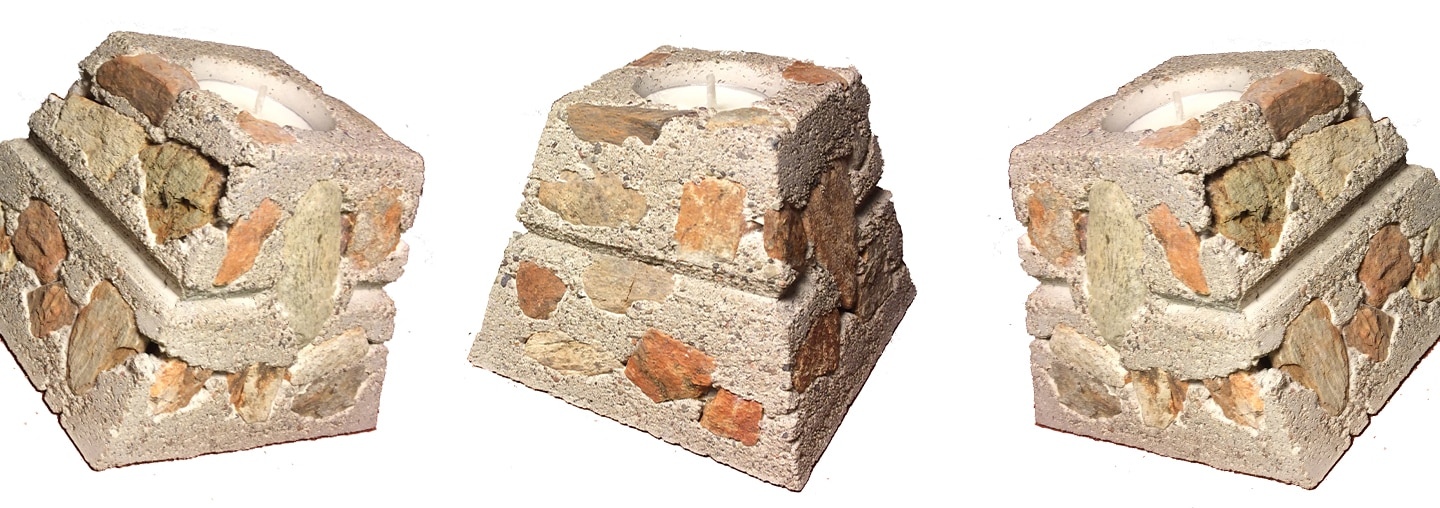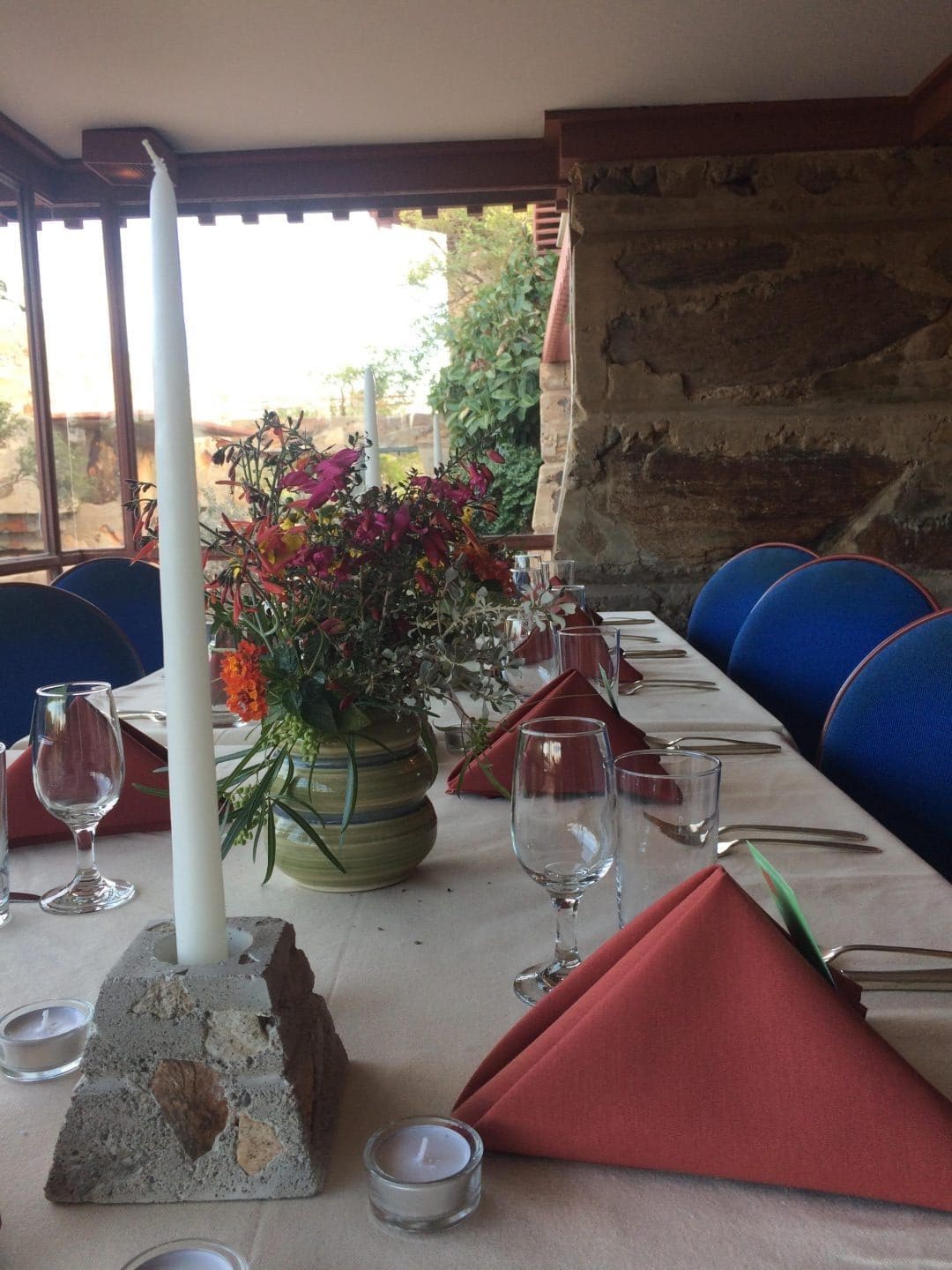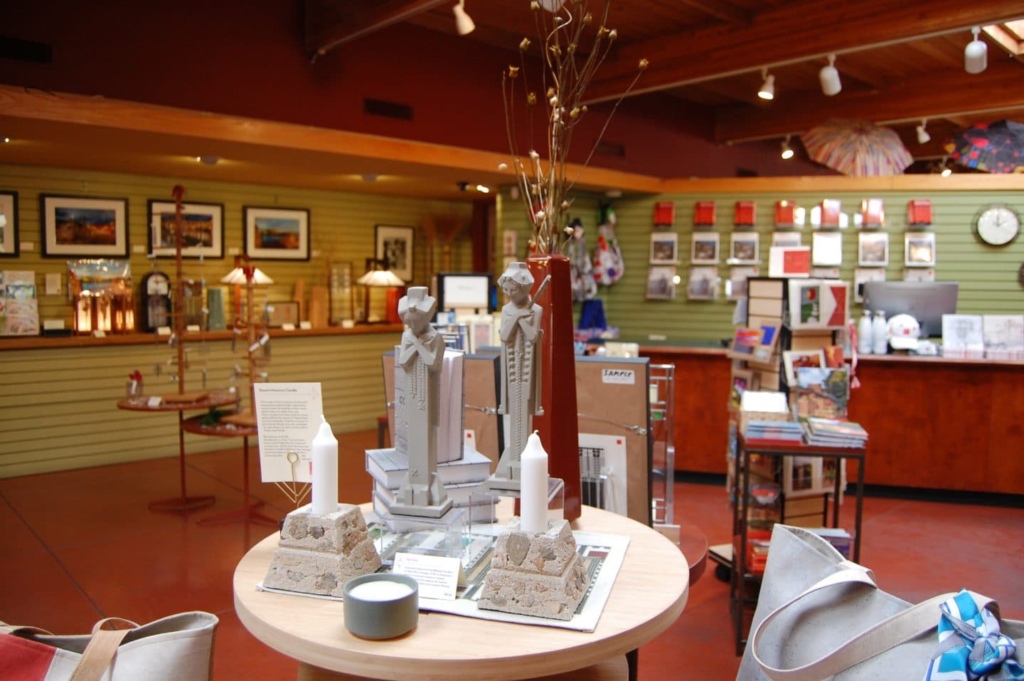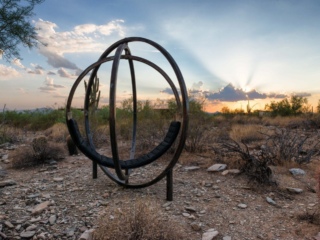
Designer Recreates Desert Masonry of Taliesin West with Candleholders
Rob Rainone | Nov 30, 2017
School of Architecture at Taliesin Immersion Student Rob Rainone discusses how being inspired by Taliesin West led to greater understanding of Frank Lloyd Wright’s work while recreating desert masonry on a smaller scale.
Ten minutes after arriving to participate in the School of Architecture at Taliesin’s Immersion Experience, I was walking through the desert behind Taliesin West with another student and the School’s director carrying a sleeping bag and looking over desert shelters to see which we wanted to spend the next eight weeks sleeping inside.
It took a few days for me to realize that I was no longer a tourist. I was part of a greater community with a history stretching back eighty years to the apprentices that constructed the beautiful campus by hand. As I participated in the design exercises of the program I felt a little regret that whatever I came up with would remain on paper.
And that’s when the idea hit me. I’d make candlesticks for the tables in the dining room! Immersion students are included on the “joylist”—a weekly list of chore assignments for residents of Taliesin West—and my week of decorating the dining room was coming.
Whatever I did would have to follow the tenets of Wright’s organic architecture. The design should be of its place, its time, and its user. But what would they look like? What could they be made of?
Desert masonry of course! I could replicate Wright’s concept of desert masonry on a small scale to support tea lights or tapers in the dining room of Taliesin West! They’d have to be square, and battered on all four sides, tapering at the same 15 degrees as so many of the walls on site. I might even be able to incise those horizontal grooves Wright liked to press into the buildings.

It was easy enough to draw what I wanted in plan and elevation. But creating physical objects took about three weeks. I enlisted the help of some of the other students to help me recreate the design digitally, and even tried to print a few 3D prototypes. Unfortunately, as simple as they seemed, their shape was deceptively complex and 3D printing resulted in a lot of failed half-prints. Finally, using rigid insulation, I was able to build a suitable final model of the exact shape I wanted. Covering that shape with polyurethane rubber, I was able to make a perfect negative mold of this shape. This mold could then be used to create many copies in concrete.
Recreating small scale desert masonry was as difficult as I expected, but not for the reason I expected. Getting the mix of sand, water, and cement to look right was straightforward—but it turns out there is an art to positioning the stones. They have to be evenly distributed but not look homogenous. Dark stones look better against light concrete. Even the small stones tend to have flat sides, which lend themselves to easy placement.
But what most surprised me were the angles. Many of the walls and masses at Taliesin West are battered; sloped at 105 degrees. It gives a sense of expansiveness that ordinary box shaped rooms can’t. I’d assumed that Wright’s battering of the walls was an aesthetic decision—a nod to the slope of the McDowell Mountains or the bumps on the distant horizon and a reflection of his ideas about keeping spaces open. But when I began inserting stones into the molds I came to realize that many of them had faces that join at 105 degree angles. What I thought was an aesthetic choice was showing up in stones that fit in the palm of my hand—and not just one or two stones, but many. Here was Wright’s genius creating architecture not just connecting to its natural landscape on the human scale but connecting with it on the tiniest of scales.
Once I started positioning the stones in the molds with these angles in mind, the candle blocks started to look much better. They became desert masonry in the truest sense of the word. Made on site, using local material, by a student, with a technique developed by Wright.
When it was my week, my decorating partner and I used them (along with some succulent plants) to decorate the dining room. Because they were created with a double recess at the top to hold either a tea light or a taper they were also used at the following week’s formal Taliesin evening with the theme being “Springtime in the Desert.” Since that time they’ve gotten much more attention than I ever expected and are now being sold in the Frank Lloyd Wright Store at Taliesin West!

My eight weeks living and working at Taliesin West was unforgettable. I’m honored that I was given the opportunity to be a member of the community there, and flattered that the twelve original candleholders remain in Taliesin West’s Dining Room.
These handmade desert masonry candleholders are available for purchase online through the Frank Lloyd Wright Store! Call 602.800.5444 to place your order or shop online. (Please note that supplies are limited.)




